A few months ago, I reviewed the ZTE Axon 20 5G, a mostly mid-range phone that stood out for being the first commercially available smartphone to pack a selfie camera under the display. Now, ZTE has introduced the Axon 30 Ultra 5G, and this time, it's a flagship phone without any groundbreaking features to its name.
Indeed, ZTE's Axon lineup doesn't seem very coherent. The ZTE Axon 10 Pro was one of the first 5G phones in the world and it had a Snapdragon 855 chipset with no big gimmicks. Then the Axon 11 used a Snapdragon 765G (for the 5G version), which was then used for the Axon 20. Now we're back to a flagship status and no gimmicks. Not that I would have wanted another under-display selfie camera like the last one, it's just kind of weird that ZTE doesn't have separate product ranges for these different types of products.
Compared to most other flagships, the ZTE Axon 30 Ultra does seem pretty appealing considering its $749 starting price and that on the surface, it doesn't seem to make any big sacrifices like Samsung's Galaxy S20 Ultra or the OPPO Find X3 Neo. That doesn't mean it's perfect, though.
Specs
| CPU | Qualcomm Snapdragon 888 |
|---|---|
| GPU |
Adreno 660 |
| Display |
6.67 inches, 1080x2400 (20:9), 395ppi, 144Hz refresh rate, OLED |
| Body |
161.53 x 72.96 x 8mm (6.36 x 2.87 x 0.31in); 188g (6.63oz) |
| Camera | 64MP IMX686 main, 64MP Samsung GW3 ultra-wide, 64MP Samsung GW3 portrait camera (2x optical zoom), 8MP periscope (5x optical zoom); Front - 16MP |
| Video | 8K 30fps/4K - 60fps; Front - 1080p 30fps |
| Aperture | f/1.6 + f/2.2 + f/1.9 + f/3.4, Front - F/2.4 |
| Storage | 128GB; non-expandable |
| RAM | 8GB |
| Battery | 4,600mAh |
| Connectivity | Wi-Fi 6, Bluetooth 5.2 |
| Color |
Black |
| OS | Android 11 with MyOS 11 |
| Price | $749 |
Design
The design of the ZTE Axon 30 Ultra feels like the most bog-standard design you could ask for in a smartphone today, and in some ways, that description applies to the whole phone. For starters, there's only one color available which is this almost-but-not-quite black grey that's mostly unexceptional. It's got a super smooth smoky finish that feels quite nice to the touch, and the way it reflects light can be interesting, but it's not overly appealing.
Perhaps the most interesting element of this phone's rear design is the camera setup, which is not only a large protrusion but also comes with this little sliver on the side with text that reads "Neovision photography". That little sliver gives the phone some personality, which I like, but it's just not designed in a very attractive way overall. It also feels like the camera bump is too big for the results it offers, but considering there are three 64MP cameras and a telephoto lens in here, it's understandable.
The frame of the phone uses a similar dark and muted color, and on the sides, it's very thin because both the rear panel and the display are very curved. The power button and volume rocker are both on the right side, and the power button has a textured finish so it's easier to tell apart. All the buttons feel fine, so there's nothing to criticize here.
The left side has nothing except for a couple of antenna bands.
The top and bottom edges of the phone are both completely flat, with the top side housing a microphone and a couple of antenna bands.
At the bottom, there's the USB Type-C port, SIM card slot, and speaker grill.
Display and sound
On the front, of course, is the display, which is a 6.67-inch Full HD+ panel with a 20:9 aspect ratio. It curves significantly at the edges, something we don't see as much of these days, since many OEMs have realized that too big of a curve can cause some problems with unwanted touches. It comes with a 144Hz refresh rate and a 300Hz touch sampling rate, so everything looks as smooth as you could possibly want it to, and it also responds well to touch inputs. There's a fingerprint sensor under the display too, and it works about as well as on any other phone with a similar sensor.
ZTE claims 10-bit color depth and 100% coverage of DCI-P3, and the phone certainly lives up to that. It gets pretty bright and colors are very vivid and punchy. The high refresh rate is also very welcome, it's a great display all around. I would have preferred less curved edges, or completely flat ones, though. ZTE touts the curved screens as a selling point for this phone, but I'm not a big fan of them.
However, I have noticed some discoloration on the right edge of the phone, close to the power button. It's only noticeable in dark environments when the display brightness is also low, but it's definitely a problem. I asked ZTE about this but haven't heard back yet. I'll update this paragraph once I have more information.
Sound from the speakers is also good. You get stereo sound thanks to an amplified earpiece paired with the bottom-firing speaker, and it gets fairly loud without much in the way of distortion. They're not the loudest I've heard, but they're good enough for most cases. The microphones also appear to do a good job of picking my voice up.
Camera
The camera setup is one of the big focus points for ZTE with the Axon 30 Ultra, and it's got some impressive numbers to back up its confidence. Out of the four rear cameras, three of them are using 64MP sensors. The main camera uses a Sony IMX686 sensor, while the ultra-wide and "portrait" camera (2x optical zoom) use Samsung'S GW3 sensor. Rounding out the setup, there's an 8MP periscope telephoto lens with 5x optical zoom and 60x digital zoom. At first glance, this camera setup has a lot of potential.
Using the same benchmark I used for my OPPO Find X3 Neo review, I compared the Axon 30 Ultra to that phone, since the price range is similar. As you can see in the images below, the ultra-wide-angle camera on the Axon 30 Ultra creates somewhat gloomy images in comparison, but for the main camera and 3x zoom photos, it captures more detail and brighter colors. For each pair of pictures, the OPPO Find X3 Neo is shown first.
In real-life usage, I wasn't that impressed by the Axon 30 Ultra, which made that benchmark somewhat surprising to me. Most shots look fine during the day, but there's a pretty noticeable difference in the color science between each camera. That's not exclusive to this phone, but it can be very noticeable here, more so than most others. Also, while photos look fine in broad daylight, there can be a slight sense of haziness in some pictures when the amount of light available starts to go down, making things look more washed out. Night mode does help a bit here, but I think part of that is because this camera really doesn't handle nighttime photography very well in the default setting.
While you can use the portrait camera just to zoom in, it seems to have more of a specific purpose, which is to take pictures that feel like close-ups of the subject. You can see a few examples of regular shots versus "portrait" shots near the top of the gallery. The selfie camera is a 16MP sensor, and it's pretty decent, too. It takes good pictures in daylight, but it does lose some sharpness indoors.
The camera app has some features that ZTE seems to be pretty proud of, but it's up to you if you have use for them. It comes with "vlog" video recording modes, which give you certain presets for recording to create specific effects. For example, the PullFocus mode will record for eight seconds while changing the focus length so you can capture the focus switching from one object to another. There are a few modes like this, and there are also a lot of filters for photos, with ZTE also offering the ability to load your own custom filters in the .cube format.
These are neat things, but they're things I'll never use. On the other hand, features that I'd consider important are missing here. Night mode doesn't work for the telephoto camera, for example. In fact, you can't really control zoom at all in night mode, you can only switch between the default zoom for each of the rear cameras. There's no night mode video, either, something I really appreciate on OPPO phones. I also dislike some other things about the camera app, like the position of the zoom control in landscape orientation.
Performance, battery life, and software
The Axon 30 Ultra is a true flagship, and you're not making many sacrifices in terms of performance. There's a Snapdragon 888, 8GB of RAM, and 128GB of internal storage in the base model, and you can upgrade to 12GB+256GB for $799, so you're getting solid specs for the price. Like any flagship these days, performance is everything you could ask it to be. Everything opens fast, and the high refresh rate also helps with the smoothness. ZTE sent me the model with 8GB of RAM, and it really doesn't leave me much room to complain.
Looking at benchmarks, it pretty much lives up to what you'd want from a flagship. In AnTuTu v9, it manages a score of 815,100, putting it in the same ballpark as the RedMagic 6 I reviewed in April. It's ahead of other Snapdragon phones like the OnePlus 9, too. This benchmark measures overall performance, including the CPU, GPU, storage, and memory.
Then there's GeekBench, which is a test focused solely on the CPU. With a single-core score of 1124 and a multi-core score of 3650, it's again in line with other Android flagships.
Finally, GFXBench tests the GPU, and here, too, the Axon 30 Ultra pulls some impressive scores matching the gaming-focused RedMagic 6. If mobile gaming is your thing, this seems to be a solid option.
Moving on to the battery, there's a 4,600mAh unit in here and it supports charging at 65W with the charger included in the box. That's a killer setup right off the bat, and indeed, the phone usually lasts me one and half to two days on a charge, which is awesome. Part of the reason for this seems to be the somewhat aggressive battery management ZTE put in place here. It's nowhere near as bad as Huawei phones - as in, if I create a battery use exception, this phone actually follows it - but out of the box, the phone kept disconnecting from my smart band because it kept killing the Huawei Health app, even during a workout that uses the phone's GPS. I would prefer more reliable notifications in exchange for a bit of battery life.
As for the software, the Axon 30 Ultra runs Android 11 with ZTE's new MyOS 11 skin on top. This replaces the MiFavor UI that I saw on the Axon 20 5G, and it's a decent enough interface. While lots of UI elements are custom, nothing major is missing, and it even has display scaling options that so many OEMs like to remove. Most bundled apps are Google's default ones, but it also lets you disable or uninstall most of them, which is great.
One thing that I initially found weird is that the most prominent quick actions are wider and take up two rows, but Google recently showed off a similar approach for Android 12, so I assume someone likes this. Another problem with this, though, is that these default actions are locked, so you're stuck with the four preset ones. Otherwise, it's a fine Android skin, with nothing overly negative nor overly exciting. There's a section in the Settings app called SyncMind, which lets you see things like signal strength for Wi-Fi and cellular connections, or take a look at how system resources are being used. The name of the page really doesn't give away what's in it, though.
Conclusion
The ZTE Axon 30 Ultra is an odd case of a phone that's almost unique based on how un-unique it seemingly is. The design is pretty boring and unexceptional even if there's nothing wrong with it, and there's no feature that's going to blow your mind in any way, but there's also nothing too terribly wrong with it.
That doesn't mean it's a bad phone, and it packs most of the basics of what you might want in a flagship: awesome performance, a smooth and good-looking display, great battery life, solid build quality, and a fine software experience. But it's hardly an exciting phone considering most other flagships, and even some mid-range phones, offer most of that, too.
It doesn't help that the biggest attraction of the phone, its camera setup, isn't that amazing. It produces fine shots during the day, and night mode helps when it's available, but there are some limitations to it and more time seems to have been invested in superfluous features. It's serviceable, but you can also find better.
Overall, I just can't point out one thing that makes me truly excited for this phone, and it ends up affecting my overall perspective of it. It nails a lot of the basics for a flagship, and it gives you all of them in a package that's more affordable than most comparable phones in the Android space. If that's all that matters to you, then you can buy the Axon 30 Ultra directly from ZTE starting at $749.














































































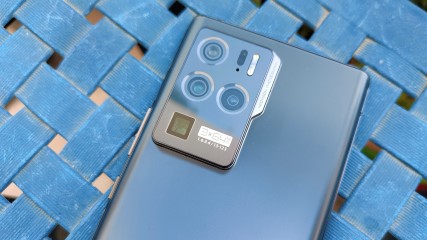
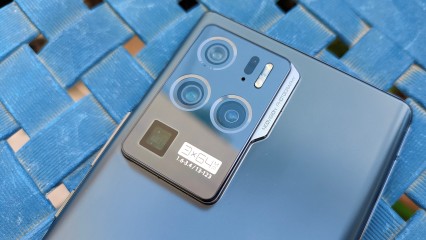

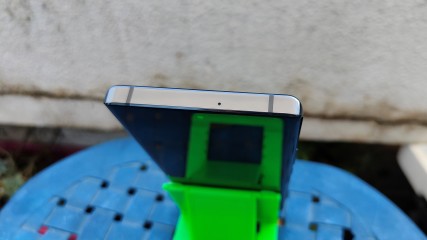
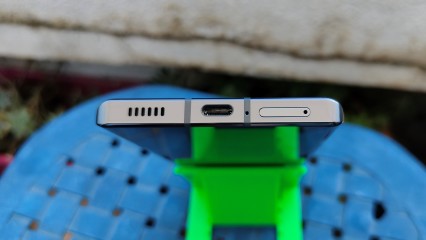
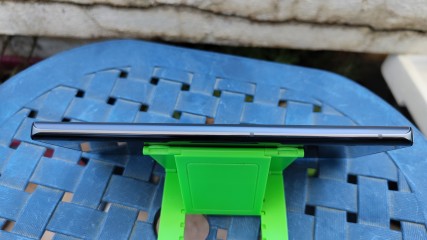
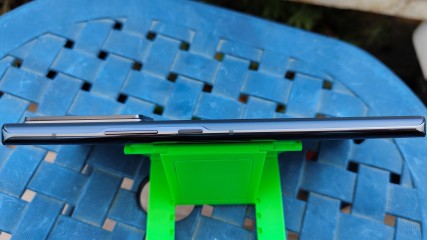
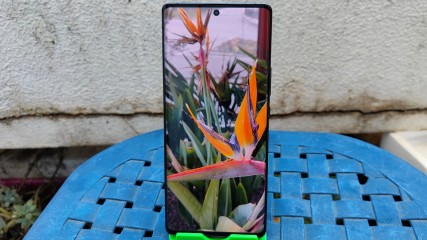

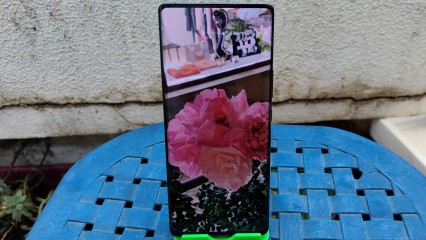










11 Comments - Add comment